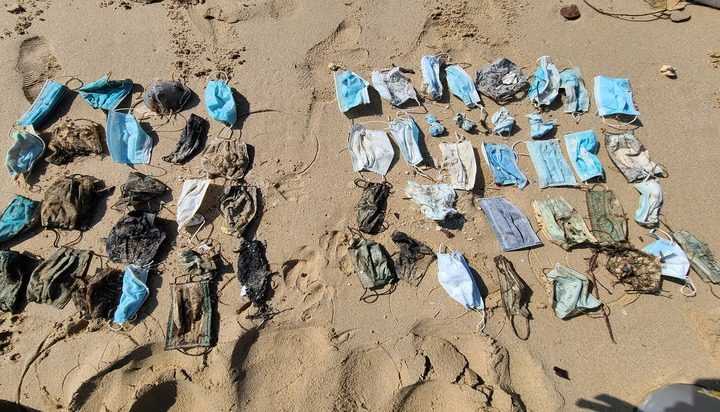We’ve seen face masks for months in areas they’re not supposed to be: storm drains, sidewalks, beaches, and parks.
Now, we’re discovering how many of our oceans could have flooded with used masks.
“Once plastic enters the marine environment, it’s very difficult to move,” said Dr. Teale Phelps Bondaroff, director of research for OceansAsia.
The Marine Conservation Organization has been recording the number of face masks that have been washed on a remote island south of Hong Kong since the outbreak of the pandemic.
“About six weeks after COVID hit Hong Kong, so late February, we began finding masks, and lots of masks,” said Bondaroff. “What’s remarkable is we weren’t finding face masks before COVID.”
Masks are made of polypropylene, which Bondaroff defines it as thin plastic fibres.
“The fact that we are starting to find masks that are breaking up indicates that this is a real problem, that microplastics are being produced by masks,” he said.
These tiny pieces of plastic will stay in the ocean for hundreds of years, threatening fish and even contaminating the air.
“The question that we couldn’t answer was how many are entering our oceans? We just didn’t know,” said Dr. Bondaroff.
OceansAsia has launched a study to find the solution and recently published its results.
Of the projected 52 billion masks created globally in 2020, 1.56 billion are expected to enter our oceans this year, resulting in an additional 4.680 to 6.240 metric tonnes of marine plastic waste.
Bondaroff points out that the study used a conservative loss rate of 3% and an average weight of 3 to 4 grams for a single-use polypropylene surgical face mask to arrive at the estimate.
“The 1.56 billion face masks that have entered our oceans in 2020 are there for the long run. They will remain in the ocean for 450 years or more, and they’ll break into smaller pieces.”
The study states that global sales of face masks grew from about $800 million in 2019 to $166 billion in 2020.
“That’s important, we need to keep people safe, but at the same time that has a lasting impact on our environment, and we’re seeing that on the beaches,” said Bondaroff.
And he says, sadly, it’s just a tiny portion of the plastic waste that invades our oceans.
The report asks people to wear reusable masks wherever possible, to dispose of masks safely and to reduce their total use of single-use plastic.
Check out the video below:
